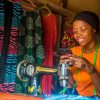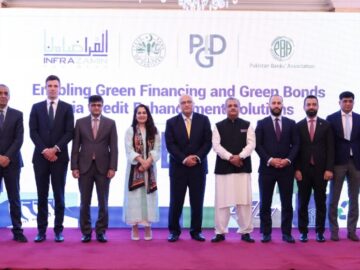In a new partnership with Tink, Greenly has its sights set on taking its app across Europe, and putting banks at the center of its plans to help shift behavior, by making it simple to offer a carbon tracker on individual and business bank accounts.
According to Greenly, Europeans have an individual carbon footprint of around 15 tones of CO2 a year on average. To meet the EU goal of being carbon neutral by 2050, the figure needs to be more like 3.5 tonnes. So Greenly is stepping in to help people and businesses easily understand and track their carbon footprint, while helping them change their behavior in a meaningful way. It’s not only doing this through its consumer app and for businesses, but also working with banking giants such as BNP Paribas in France, to offer carbon tracking to its customers through their banking app.
Greenly automatically tracks the impact of every expense a person makes, and puts this into a dashboard to show them what to focus on to reduce their carbon footprint – and rewards them for taking action.
This works by teaming up with Tink in a new partnership, to aggregate the transaction data from bank accounts across Europe. ‘We sub, sub, sub categorize every transaction we identify,’ says Alexis. ‘Then we use a method called the Monetary Emissions Ratio to quantify the environmental impact of that purchase.’
For its app users, it’s relatively straightforward to calculate the carbon footprint of taking a flight, the energy consumed in a home or fuel purchased. But when it comes to something like someone’s grocery spend it gets a bit more complicated, because Greenly can’t see exactly what’s in the cart.
This is where user profile data comes into the mix. Greenly asks its users questions such as what their average meat consumption is, if they buy organic, and the packaging or wrapping used. A calculation can then be based on the average footprint of the average cart at that specific store, based on the user’s average behavior. ‘You can be a purist about it and try to work out the difference between buying this carrot or that tomato, but the bigger behavioral picture is more important with more potential for impact, such as changing your overall meat consumption,’ says Alexis.
And it’s working. The users who engage with their dashboard at least every two weeks have a carbon footprint 20% lower than the average Greenly user.
Today, any business can create its own carbon tracking dashboard as easily as an individual can, because Greenly has automated what is usually a very time intensive and manual process. ‘Our hypothesis was that we needed to put some tech into it,’ says Alexis. ‘Excel spreadsheets are great – but they’re 30 years old.’
So Greenly adapted what it does for consumers to take to businesses. Instead of a consultant asking for invoices and data, they automatically collect it straight from the business bank account. Greenly estimates 60% – 70% of a businesses carbon footprint can be worked out from its transactions and expenses. The rest, such as staff commuting, computer usage and building size, can then be gathered by Greenly’s platform. Then Greenly can help businesses start with the low hanging fruit to improve their carbon record, encouraging them to reduce emissions rather than start with offsetting, which is much more costly in the long run.











